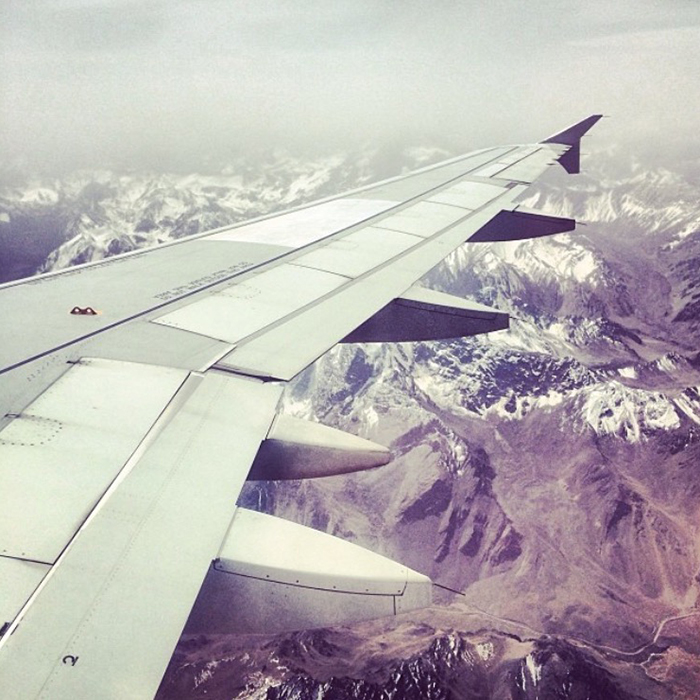Come fly with me
Author: Adam Holden

Photograph: Jason Lowe
I like to have a glass of wine when I fly, perhaps even a couple. Well, actually, since you’re offering, just keep them coming. I know that there is a strong school of thought that the best way to cope with travel, particularly long-haul, is to remain as unpolluted as possible and there’s air rage and DVT to consider – neither of which are laughing matters – but there are less severe implications of drinking wine at 35,000 feet.
Commonly held wisdom suggests that acidity, alcohol and tannins are accentuated in-flight; the lower air pressure, low humidity and air conditioning all playing their part in sabotaging your olfactory talents – even noise impacts your sense of taste. It stands to reason then, that there would be some hard and fast rules about which wines you’re most likely to enjoy in-flight: reds should be supple in structure and full in fruit, but preferably lower in alcohol; whites should be similarly fruity and without pronounced acidity. So there’s not much room for subtlety and nuance.
But I’m not so sure I agree, not wholeheartedly, in any case. For one thing, everyone reacts differently to flying; some people (of whom I am one) have their senses all but obliterated. My head seems to throb and my sinus reacts terribly, severely dampening my perception. Others seem to cope with it perfectly well, my wife for one. So whilst I may only be satisfied by an overbearing Aussie Shiraz she is able to deduce the finer points of the house Champagne.
Another thing that makes me disinclined to believe in any sweeping generalisations is our own experience of supplying Virgin Atlantic for the last 10 years. We’ve put a lot of wine on board in that time (about two million bottles, give or take) and the respective popularity of the wines paints a somewhat inconsistent picture.
Following extensive quarterly tastings with Virgin, led by our Wine Director Mark Pardoe MW, we do our best to assess which wines will be most popular on board so that we can place orders accordingly. Using our wine merchants’ intuition and historical data we usually get it right, but the results are not without surprise.
The delicious, but rather obscure Californian Primitivo we listed recently was ripe and full of fruit, and despite being an unusual choice, hugely popular. Which implies that the happy flyers were very keen to try something different and, having done so, went back for more; the bold fruit and supple tannins performing well in the conditions.
By contrast we’ve also had a lot of success with high acidity whites, even an English Bacchus, with its mouth-puckering freshness, was extremely popular. You could argue that there’s an element of patriotism involved in such popularity, and that may well be the case, but we’ve had success with lively Rieslings and recently a Chablis-esque Burgundy from the lesser known Vézelay region.
It’s nice to have a set of rules to follow, easy at least, but wine just doesn’t work like that. Wine is a sensory experience and we all have different sensory perceptions: There’s nothing ground-breaking about that statement, but we have to remind ourselves of it sometimes. Our senses of smell are unique to us, the microbial life which thrives in our mouths and impacts our perceptions likewise; as unique as our fingerprints in fact. When one considers these variables (and more besides) added to the unpredictable ways in which our bodies respond to flying, it’s difficult to make many definitive pronouncements. Except that is, to say that as always with wine, and in life, the key attribute is balance; this rule applies whether you’re at no feet or 35,000.
Now the future of aviation holds new promise for those of us who enjoy wine (and food) in the sky. The new generation of aircraft, the “Dreamliner” Boeing 787, confronts some of the issues which attack our senses. With higher cabin pressure, more oxygen, and more efficient cleansing of the air there is hope for the airborne epicure yet.


